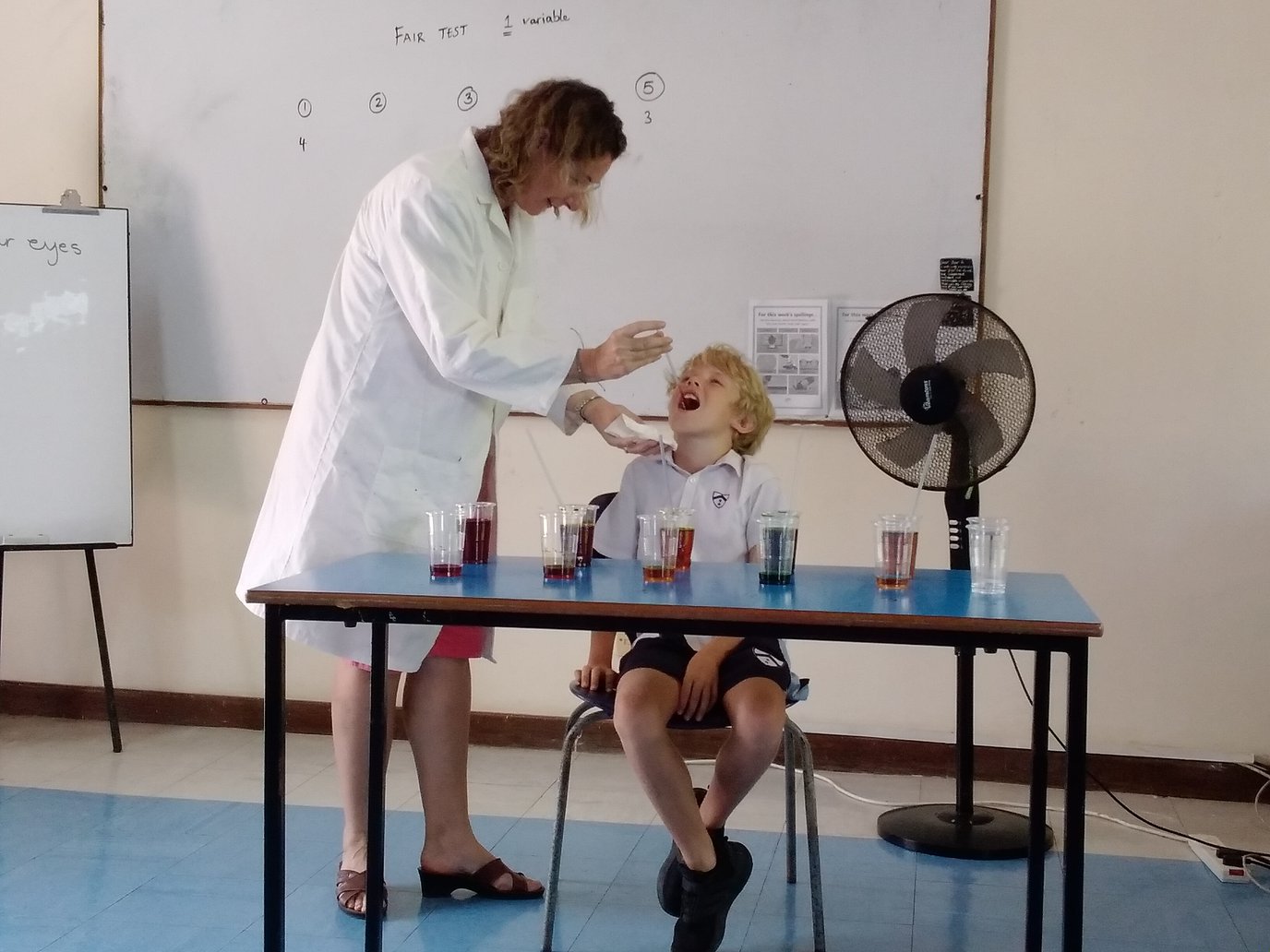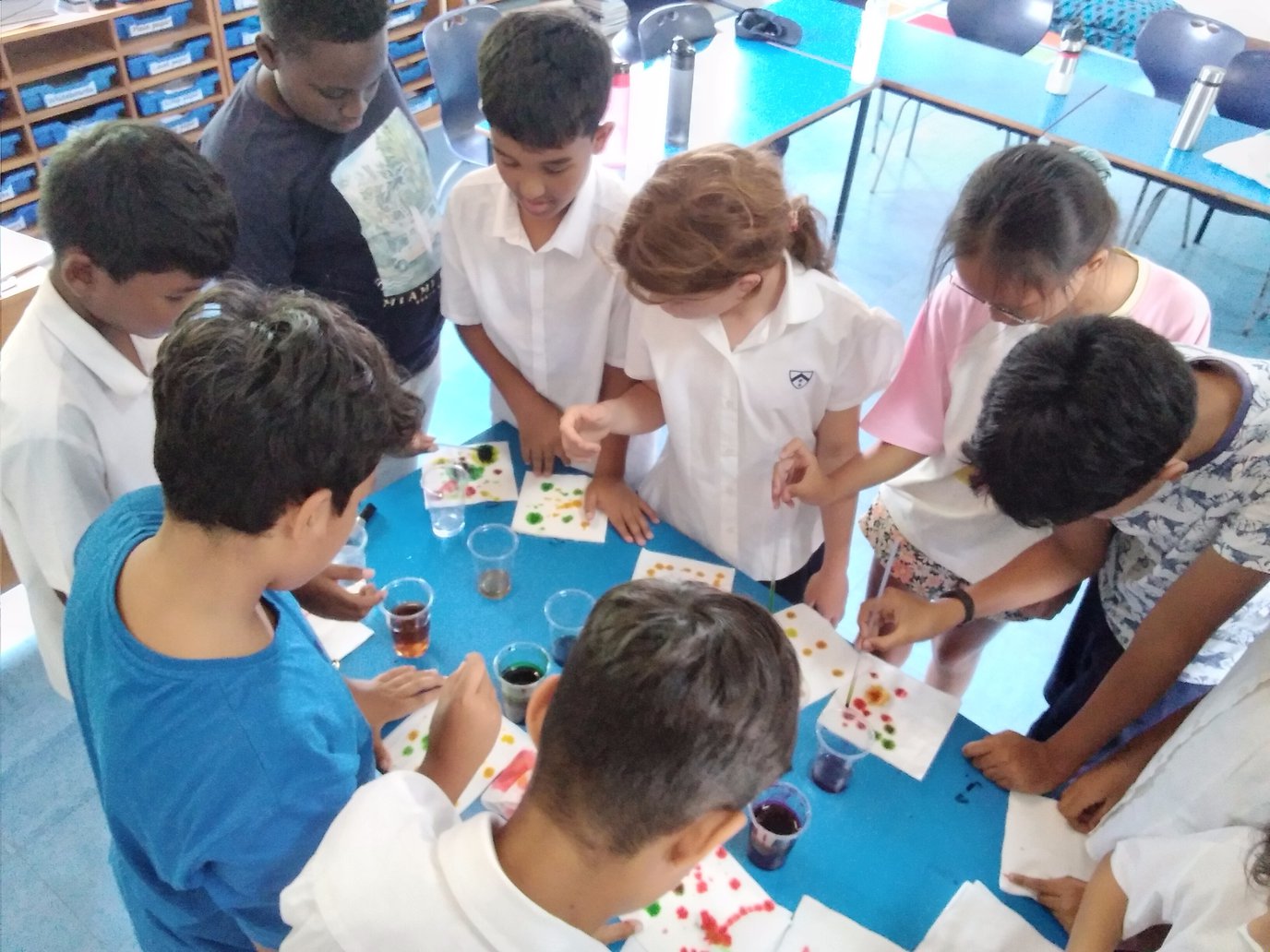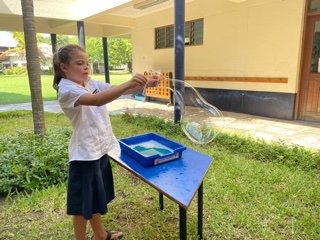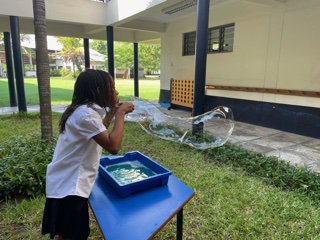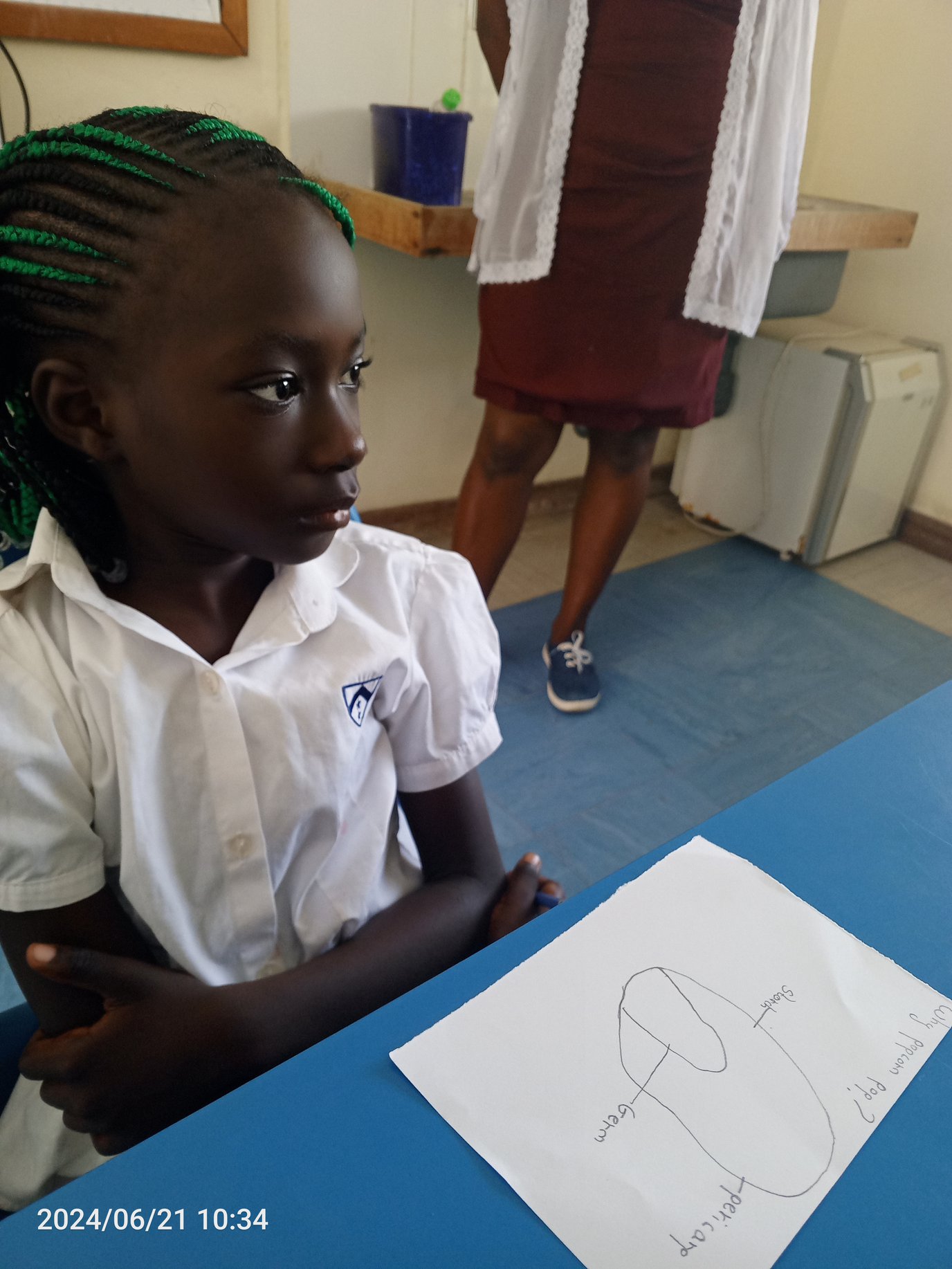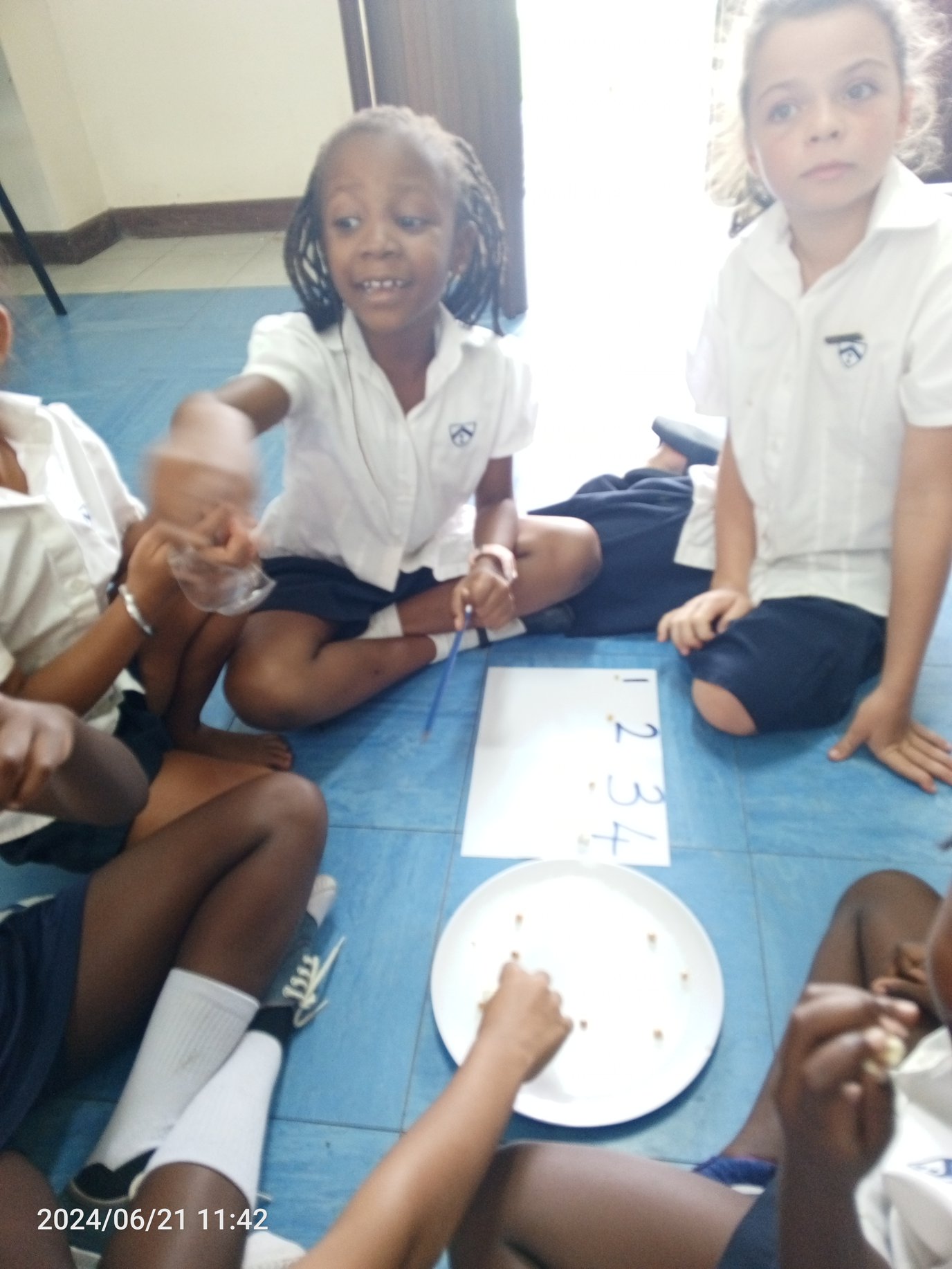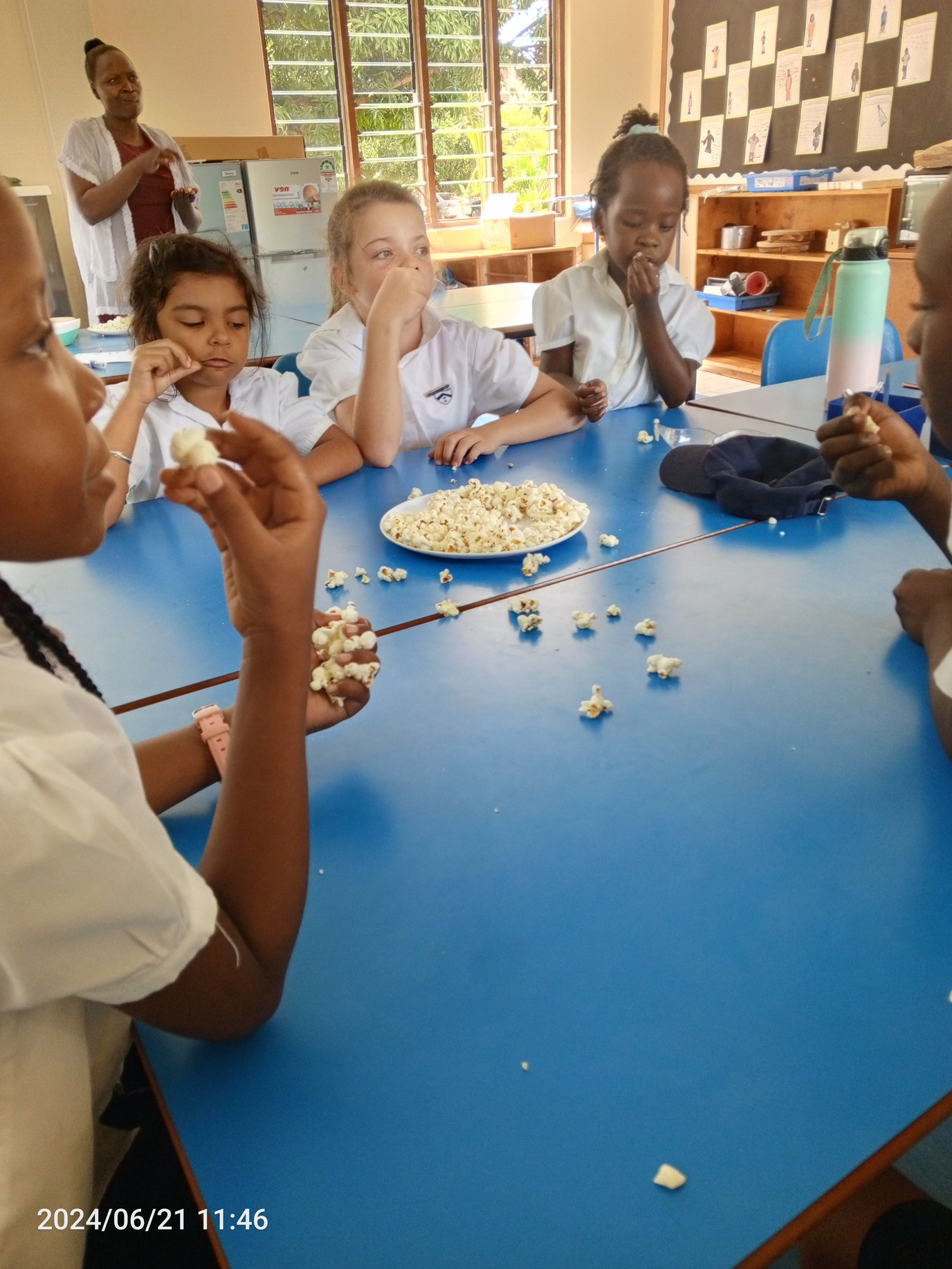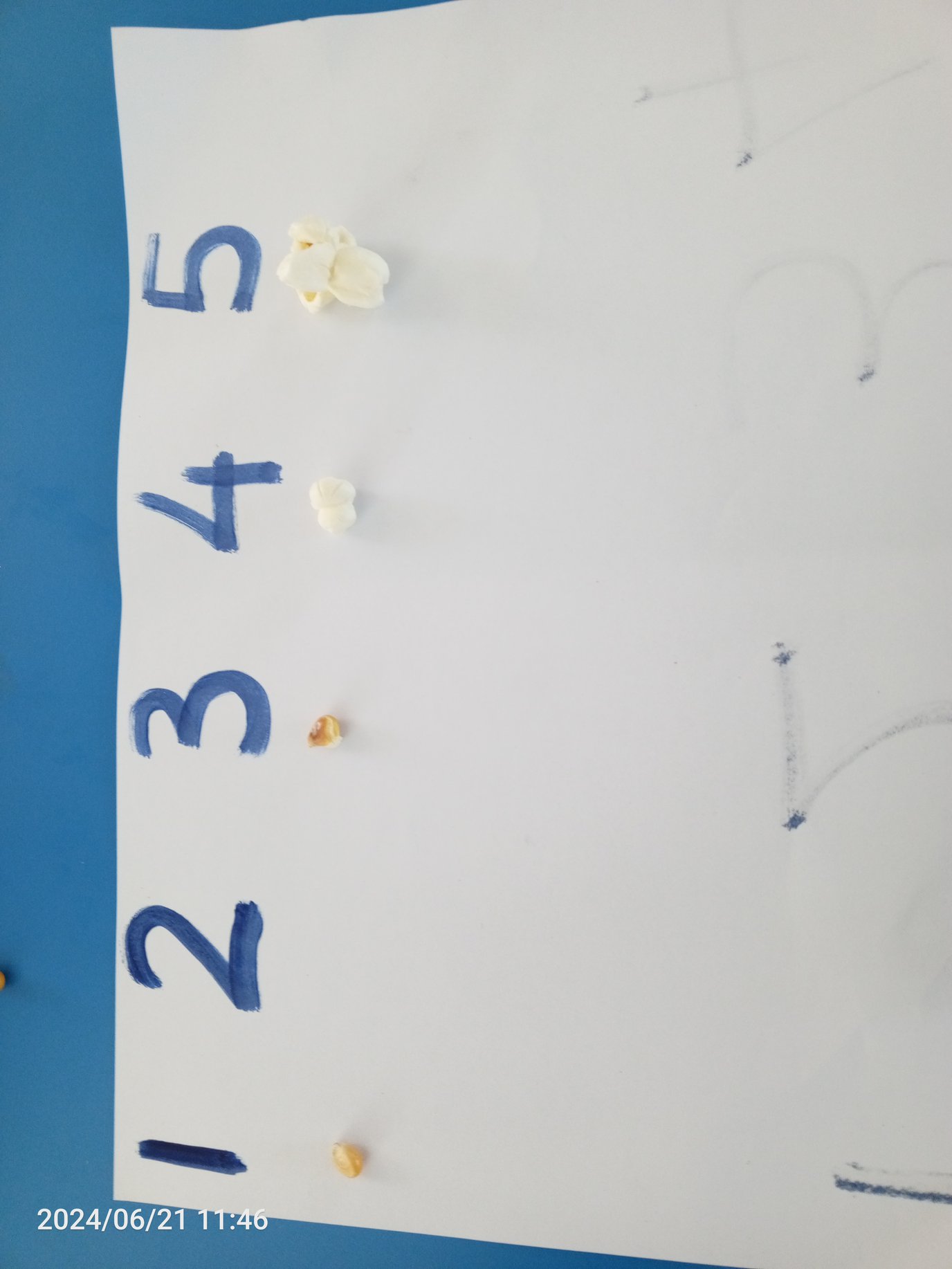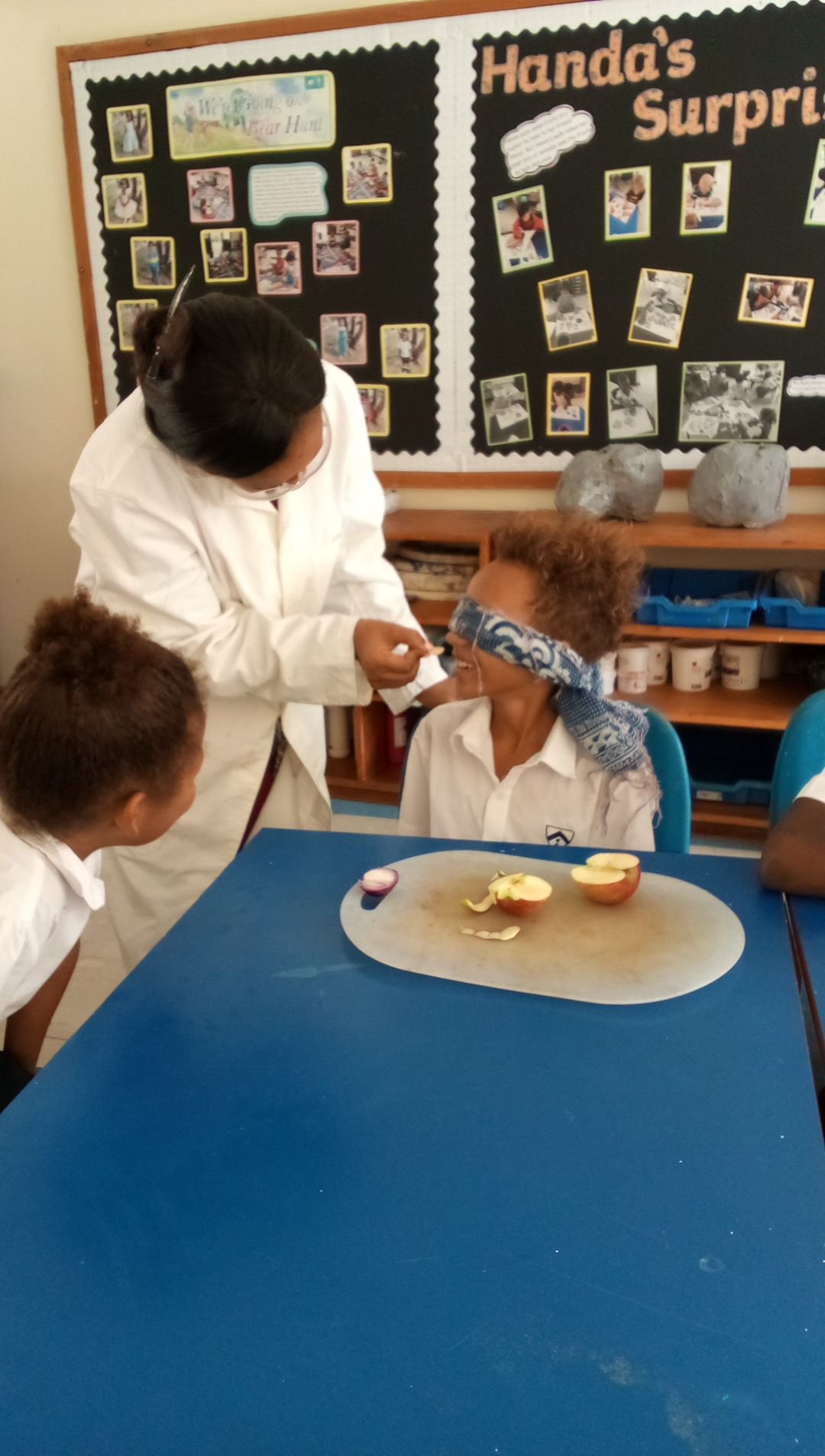Primary STEM Day
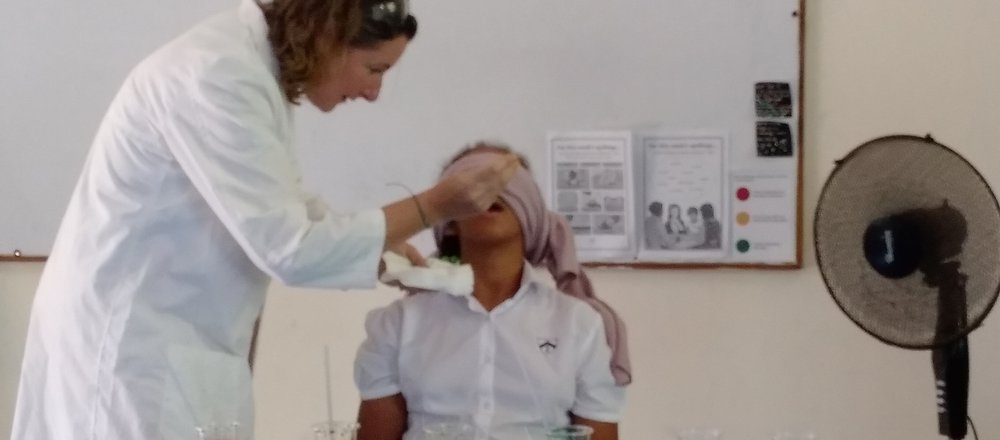
28th June 2024
Last Friday, we had our amazing STEM (Science, Technology, Engineering and Maths) Day! We kicked things off with a brilliant experiment, using hydrogen peroxide and yeast to create ELEPHANT TOOTHPASTE!
After that, all of Primary rotated around different activities with their science experts guiding them through a range of exciting activities. Here’s a peek at what they got up to:
Scientist Buckley: We explored the question: How do catapults generate energy? After a brief look into the historical uses of catapults, students learned to build their own, focusing on the design elements that generated the energy to fire! We then predicted which size cannonball would travel the farthest and set up a scientific test, following plenty of practise shots. Some young sharpshooters even mastered accurate firing and could land their cannonballs inside a target!
Scientist Maina: Have you ever wondered why popcorn pops? It’s a fascinating process that combines science and a little bit of magic!
The popcorn experiment was a hit among our Year 1, 2 and 3 students, combining education and enjoyment seamlessly. It provided them with a hands-on learning experience that made the science of popcorn popping come alive. This activity not only enriched their understanding of scientific principles but also sparked their curiosity and love for learning.
Scientist Pasta: We answered the question: How do bubbles work? The children were excited to learn that a bubble is formed when a layer of water is sandwiched together between two layers of soap, thereby allowing a pocket of air in the middle for a bubble to form and float! The children put this knowledge to the test when they created soap solutions and made bubbles using the wands they made from straws and string. There was lots of excitement and bubbles filled the air!
Scientist Ndungu: We explored the question: Where does rain come from? We answered this question by creating a mini water cycle. We used a large metal dish, poured in some water and placed an enamel coffee cup inside. We then covered the dish with a layer of cling film. We left the dish in the sun for sometime and then made our observation.
We discovered that there were some droplets of water in the cup. What happened? The water in the dish evaporated when heated and condensed on the cling film and thereafter dropped into the cup. This demonstrated the water cycle.
Scientist Mwaka: In our STEM lesson, we explored how our senses are interconnected. The children enjoyed using their various senses to identify fruits and drinks. While blindfolded, they could sniff different fruits and drinks and identify them. They also tasted them while blindfolded- with their noses pinched- and still recognised them. They learned that all senses are connected and are developed through environmental exposure. One can identify something by taste if they are familiar with it, having been exposed to it through touching, tasting, smelling, and so on.
Scientist Russell: We answered the question: Can your eyes taste? Yes they can! How many times have we made a decision not to try something because of the way it looks and how we think it will taste? I secretly added different food colouring to pure apple juice and the children made predictions about which drink they would like best, based on how it looked. Some tried it with their eyes open and some were blindfolded. Some young scientists with discerning tastebuds could pick out the pure apple juice, but others got in a real muddle without their eyes! The final group had some great fun making abstract art masterpieces with the food colouring.
In the afternoon, we culminated our STEM Day with our Invention Convention which was superb! Thank you so much for the hard work and effort put in by staff, children and parents who made this day the success it was.
Our kids are just buzzing about science at BMIS!
